
Caroline Herchel, born in 1750, enjoyed looking at the night sky with her father. She would become the first woman to receive the Gold Medal of England’s Royal Astronomical Society. Caroline’s own words punctuate the lucid narrative. Expressive watercolor and line illustrations effectively evoke the time and place. A timeline and glossary conclude the book.
Caroline’s Comets: A True Story

In this Space Explorers series, topics of interest to younger readers are introduced in clear color photographs and accessible, logically presented text. “Activities and Tools” to extend each subject are included in an index, along with suggestions for finding additional information.
Rockets

Space bunnies are back for a second installment. Can twins Joules and Kevin save their school from the ferocious fur balls? Fiercely funny, this is sure to please young readers.
Fluffy Bunnies 2: The Schnoz of Doom
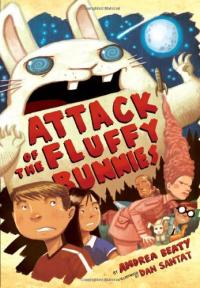
With humorous allusions to a candy universe and over-the-top puns, this laugh out loud funny novel follows twins as they defeat killer space bunnies. Heavily illustrated and with a light tone, this should appeal to even the most reluctant reader.
Attack of the Fluffy Bunnies

People have always been fascinated by the moon. Since Galileo, humans have walked on the moon, created stronger telescopes and more. The historical and current examination of Earth’s closest neighbor is presented in a generously illustrated, very handsome, and comprehensible package.
Our Moon: New Discoveries About Earth’s Closest Companion

Kathy Sullivan followed her dreams regardless of what other girls did. She learned to pilot a plane as a teenager and as an adult, an astronaut and the first woman to walk in space. Her early experiences are juxtaposed to her work as an astronaut on alternating spreads seen in attractive illustrations and a crisp text. A note from Sullivan (coauthor of the book) as well as brief sketches of other women astronauts concludes this fascinating book.
To the Stars: The First American Woman to Walk in Space
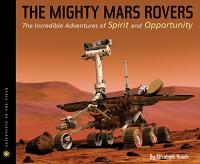
This book tells the greatest space robot adventure of all time through the eyes — and heart — of Steven Squyres, professor of astronomy at Cornell University and lead scientist on the mission. This suspenseful page-turner captures the hair-raising human emotions felt during the adventures with two tough rovers.
The Mighty Mars Rovers: The Incredible Adventures of Spirit and Opportunity (Scientists in the Field series)
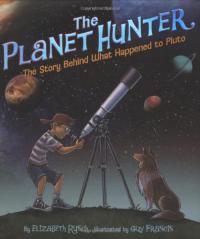
Why the once-planet Pluto was demoted to a lesser planetary status is explained in readable text and engaging illustrations.
The Planet Hunter: The Story Behind What Happened to Pluto

A blue alien arrives on a farm, “Blip, stop! Zot, wazzzzdot?” he wonders. Young readers will readily recognize the silhouette of a pig but will exclaim with the alien when the page turns. Lively illustrations and clipped language leaps and jumps across the pages as the exploration continues.
Waz Dot?

Spectacular photographs (primarily from NASA) and a readable, up-to-date text present current information about our solar system. Moreover, the author’s interest in science and this topic are effectively shared and may inspire readers.
Our Solar System

A handsome feline named Mr. Wuffles is quite fussy about his toys. But he certainly enjoys a small roundish object he comes across unexpectedly. Surprises abound when readers see what that object holds and how — and from whom — the aliens contained in it find help. The three-time Caldecott medalist presents another fresh, nearly wordless tale.
Mr. Wuffles!
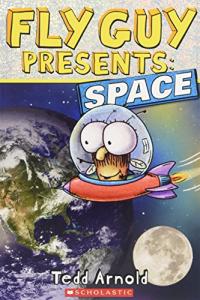
Buzz and his pet fly, Fly Guy, visit a space museum for a brief introduction to stars, planets and related concepts. Photographs and funny illustrations combine with easy-to- read language for a quick, accessible, informative trip shared by old friends.
Fly Guy Presents Space

The children’s mother is away but finally they separate their dad from his newspaper to go out for milk. When he returns with it, father regales the narrator and his sister with his adventures that start when he goes out for milk and is taken by aliens but always saves the milk! Droll line illustration combines with exaggeration for a very funny tall tale.
Fortunately, the Milk

Meet Henrietta Leavitt, a 19th century pioneer for women in science. From careful observations, Leavitt discovered that the brightness of a star determines its distance from Earth and her work helped us better understand the vastness of the universe. Warm colored pencil and watercolor illustrations by Colon create a contemplative mood. Back matter includes quotes about stars, a glossary, information about other female astronomers, and more.
Look Up! Henrietta Leavitt, Pioneering Woman Astronomer

Poems combine with information and evocative illustrations to create a sense of wonder about space and space-related topics. Beginning with a countdown (“T-minus:/10/9/8…./Spaceship soaring!”) and concluding with a child wondering about “My Place” in the universe, this intriguing collection is sure to delight readers.
Out of this World: Poems and Facts about Space

Larry, like the boy who cried wolf, is known for his prevarication. He winds up a hero, however, when he tells the truth about space aliens. Illustrations in comic book format and jazzy rhyming text and coded alien-speak are sure to tickle funny bones.
The Boy Who Cried Alien

In Native cultures, the night is a crucial part of the Great Circle and balance in the universe. In the tradition of the best-selling Keepers of the Earth and Keepers of the Animals, this collection offers unique ideas about understanding the natural world by looking at it through a nocturnal lens. Resources and activities include legends and myths, puppet shows, stargazing guides, campfire topics, and traditional dances.
Keepers of the Night: Native American Stories and Nocturnal Activities for Children

A chipmunk looks skyward and wonders about the twinkling stars before his imaginative adventure and travel to the moon. Stunning watercolors extend the familiar rhyme.
Twinkle, Twinkle, Little Star

According to Santa Ana Pueblo legend, the animals’ spirit Leader created the sun, moon, and stars by using woven yucca mats and hot coals. He selected certain animals to climb from their homes in the Third World up to the Fourth World, but Coyote was forbidden to accompany them because he was always causing trouble and stealing food from the others. Regardless of what he was told, Coyote refused to stay in the Third World. Coyote’s punishment is a lesson in what happens to animals, or people, when they refuse to obey instructions.
Coyote and the Sky: How the Sun, Moon, and Stars Began

Around the world, people and other living things interact with and are affected by the full moon in fascinating ways. Come along on a whirlwind, poetic tour of Canada, Israel, Morocco, India, China, Australia, and more countries to discover an amazing collection of full moon celebrations, beliefs, customs, and facts.
A Full Moon Is Rising

Lester explains the basics about the moon and space travel to Little Nye before they take off on their lively imaginary journey. Sturdy pages support uncluttered illustrations and simple text in this appealing, surprisingly informative book.
Rocket to the Moon
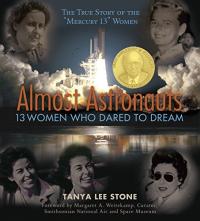
1961. Nearly two decades before Sally Ride — there was Jerrie Cobb. Cobb was one of the top female pilots in the country and completed all the astronaut testing the Mercury 7 men did. She excelled at all the tests. Proved she had the Right Stuff. Twelve other female pilots followed her, passing the tests they took with flying colors. When they were told there was no room for women in the space program, they took they’re cause to Congress.
Almost Astronauts: 13 Women Who Dared to Dream

A family shares a nighttime picnic with traditional mooncakes and other foods to honor the moon. Each silently shares a wish that is sent to the moon. The quiet celebration is presented through Lin’s signature illustrations and simple text. An endnote provides a bit more information about the festival.
Thanking the Moon: Celebrating the Mid-Autumn Moon Festival
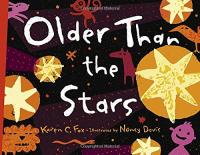
Bright, angular illustrations almost frantically zoom across pages and combine with the cumulative rhyme (think of “This is the House That Jack Built”) to explain how the earth was formed. It concludes that”…You are as old as the universe itself.” Additional information appears on each horizontal spread. A timeline of the universe and a glossary concludes this effective presentation of a complicated theory.
